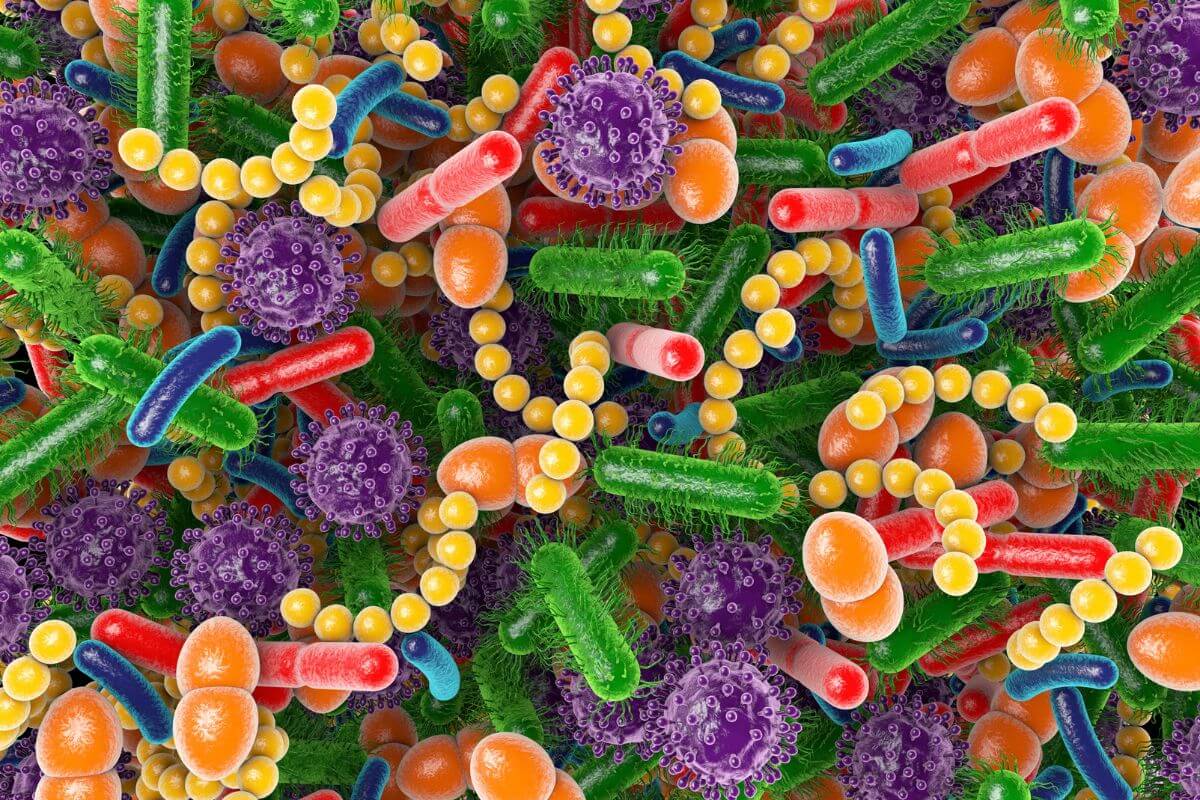Plants and soil microbes have co-evolved over billions of years, shaping the very foundation of our ecosystems. From the emergence of bacteria to the evolution of soil fungi, these invisible players have sculpted Earth’s landscape to create conditions conducive to plant life. In this article, we delve into the world of soil microbes, unraveling their crucial role in supporting plant growth.

Table of Contents
ToggleCo-Evolution of Plants and Soil Microbes
The Ancient Collaborators
In the vast timeline of our planet’s history, bacteria laid the groundwork for life as we know it. Their transformative actions on Earth’s atmosphere paved the way for the emergence of soil fungi nearly a billion years ago. Together, bacteria and fungi collaborated to construct the soil structure that became a nurturing home for plants around 700 million years ago.
Microbes: The Unseen Architects
Ubiquitous Microscopic World
Microbes are the hidden architects of our ecosystems, flourishing in every gram of soil. Their sheer abundance is staggering – a single gram of soil holds more microbes than there are people on Earth. This microbial multitude wields immense power in bolstering plant growth.

Symbiotic Support
Bacteria and fungi work hand in hand within clusters to bolster plant growth along the rhizosphere – the realm surrounding plant roots. Their partnership is pivotal; they convert dormant nutrients into forms plants can readily absorb, sustaining a constant nutrient supply essential for growth. Even in death, these microbes continue to fertilize, releasing nutrients that fortify the soil.

The Multifaceted Role of Soil Bacteria
Unveiling the Invisible
Soil bacteria, though minuscule, hold monumental significance. With over ten million classified species, they come in various shapes, from spheres to rods and spirals. These bacterial powerhouses blanket the Earth’s surface, surpassing the combined biomass of all plants and animals.

Nutrient Alchemists
Bacteria orchestrate nutrient availability through enzymatic magic. Specialized extracellular enzymes break down complex compounds into plant-friendly nutrients, facilitating nutrient uptake. They are nature’s unlocking key, liberating essential elements like phosphorus from chemical clutches, ensuring plants thrive.
Growth Promoters
Not content with nutrient provisioning alone, bacteria take on the role of growth promoters. They produce hormones that spur root development and shoot growth, orchestrating a harmonious symphony of plant vitality.

Guardians of Health
Aiding plant health is another facet of their role. Bacteria arm plants with defenses against pathogens, secreting compounds that trigger plant defense mechanisms. They also cloak roots, acting as a biological shield against malicious invaders.
The Enigmatic World of Soil Fungi
Enter the Fungal Kingdom
Soil fungi, the unsung heroes, emerge as the primary decomposers, breaking down complex matter. These fascinating organisms boast hyphae – thread-like structures – that interlace soil and roots, fostering symbiotic partnerships that nurture plants.

Saprophytic Transformers
Saprophytic fungi are the Earth’s cleanup crew, recycling organic matter and enriching soils. Their decomposition prowess not only enhances soil quality but also fosters nutrient retention and moisture regulation, critical for plant well-being.
Ectomycorrhizal Allies
Ectomycorrhizal fungi forge intimate bonds with plants, encasing roots in a protective sheath. This alliance amplifies nitrogen uptake for plants while gifting fungi with carbon nourishment. Diverse in their relationships, these fungi bridge gaps between various plant species.

Arbuscular Mycorrhizal Pioneers
Arbuscular mycorrhizal fungi, ancient collaborators with plants, create mutualistic havens. They penetrate roots, ferrying soluble phosphorus to plants, enhancing growth. In return, plants feed them with carbon, building an underground network of nutrient exchange.
Harnessing Microbial Magic
Microbes in Modern Agriculture
Scientific revelation affirms the pivotal role of soil microbes in nurturing robust crops. Beyond natural processes, commercial organic microbial formulations take center stage, amplifying nutrient cycling, disease resistance, and growth stimulation.
A Sustainable Tomorrow
As agriculture evolves, microbial biostimulants emerge as powerful tools for sustainable farming. Tailored inoculants promise to revolutionize crop management, ensuring bountiful yields and elevated plant quality, safeguarding our agricultural future.

Conclusion
The symphony of life beneath our feet, orchestrated by bacteria and fungi, is an awe-inspiring spectacle. From nutrient cycling to disease defense, these unsung heroes of the soil empower plant growth in ways beyond imagination. As we unveil the mysteries of the microbial world, we step closer to unlocking nature’s secrets for a thriving agricultural tomorrow.
While understanding the vital role of soil microbes is essential, putting this knowledge into practice can significantly amplify your plant’s growth. Consider integrating a natural, organic microbial supplement like EDAFOS™ All Natural Plant Biostimulant 16 In 1 Active Bio-Organic Fertilizer. This specialized formulation aligns seamlessly with nature’s complex processes, providing an extra boost to nutrient availability and disease resistance. It’s a gentle nudge that can lead to truly extraordinary results.
In the dynamic world of agriculture, every advantage counts. EDAFOS™ All Natural Plant Biostimulant 16 In 1 Active Bio-Organic Fertilizer isn’t just a supplement; it’s a partner in your journey towards cultivating robust, high-yielding crops. Its carefully curated blend of microbial wonders is tailored to address the unique needs of your crops, ensuring they thrive in every stage of their growth. With EDAFOS™ All Natural Plant Biostimulant 16 In 1 Active Bio-Organic Fertilizer, you’re not just enhancing your crops, you’re revolutionizing your approach to agriculture itself.
Frequently Asked Questions
Soil microbes transform dormant nutrients into accessible forms through enzymatic processes, ensuring plants can absorb essential elements for growth.
Bacteria induce plant defense mechanisms by producing compounds that fend off pathogens. They also physically shield roots, forming a protective barrier.
Fungi establish symbiosis by enveloping plant roots with hyphal networks, aiding nutrient exchange. They can enhance nutrient uptake, especially phosphorus.
Microbial biostimulants are commercial formulations of beneficial soil microbes. They enhance nutrient cycling, disease resistance, and overall plant growth.
Microbes offer eco-friendly solutions, reducing the need for chemical inputs. They enhance soil health, nutrient availability, and plant resilience, promoting sustainable farming practices.



